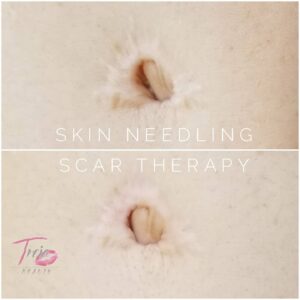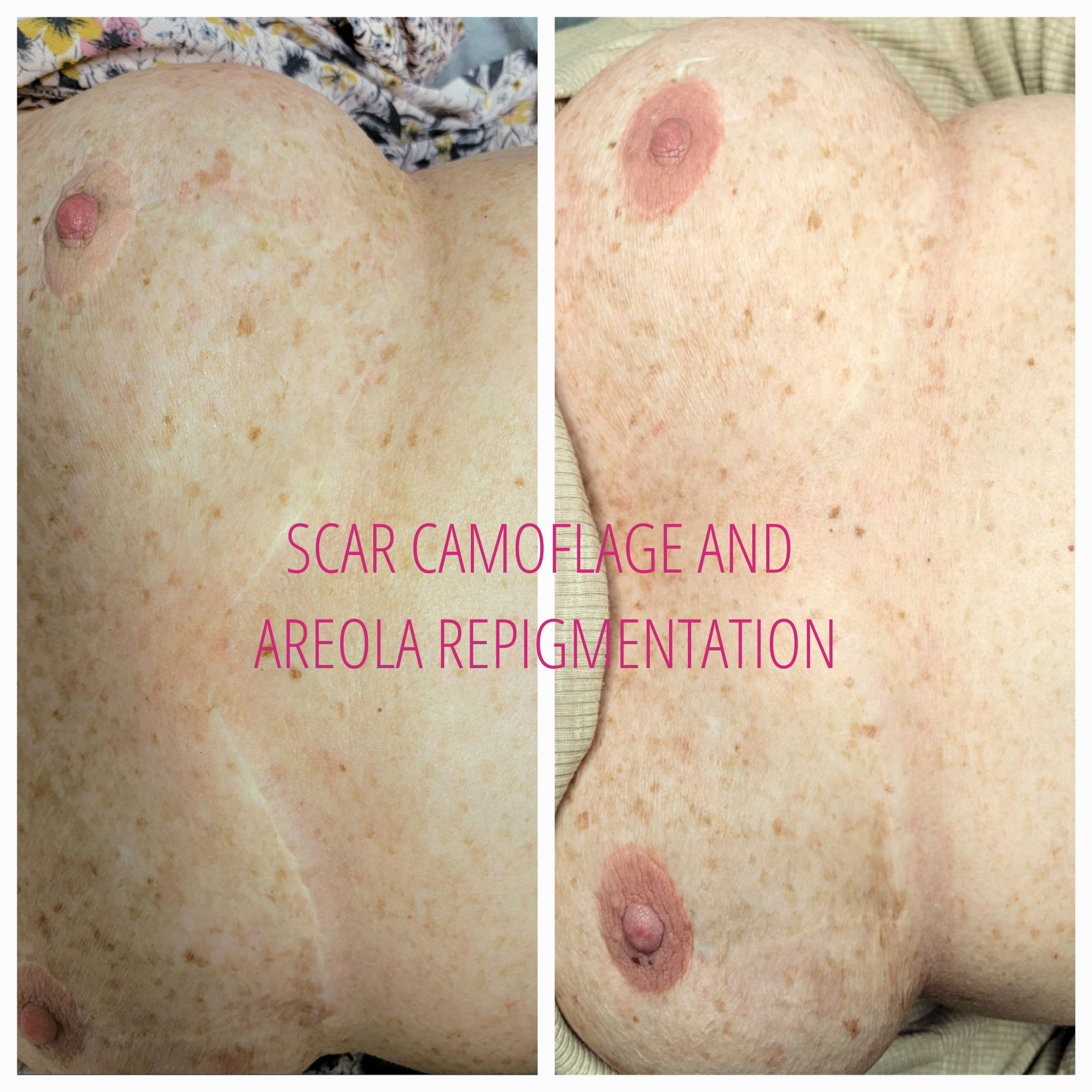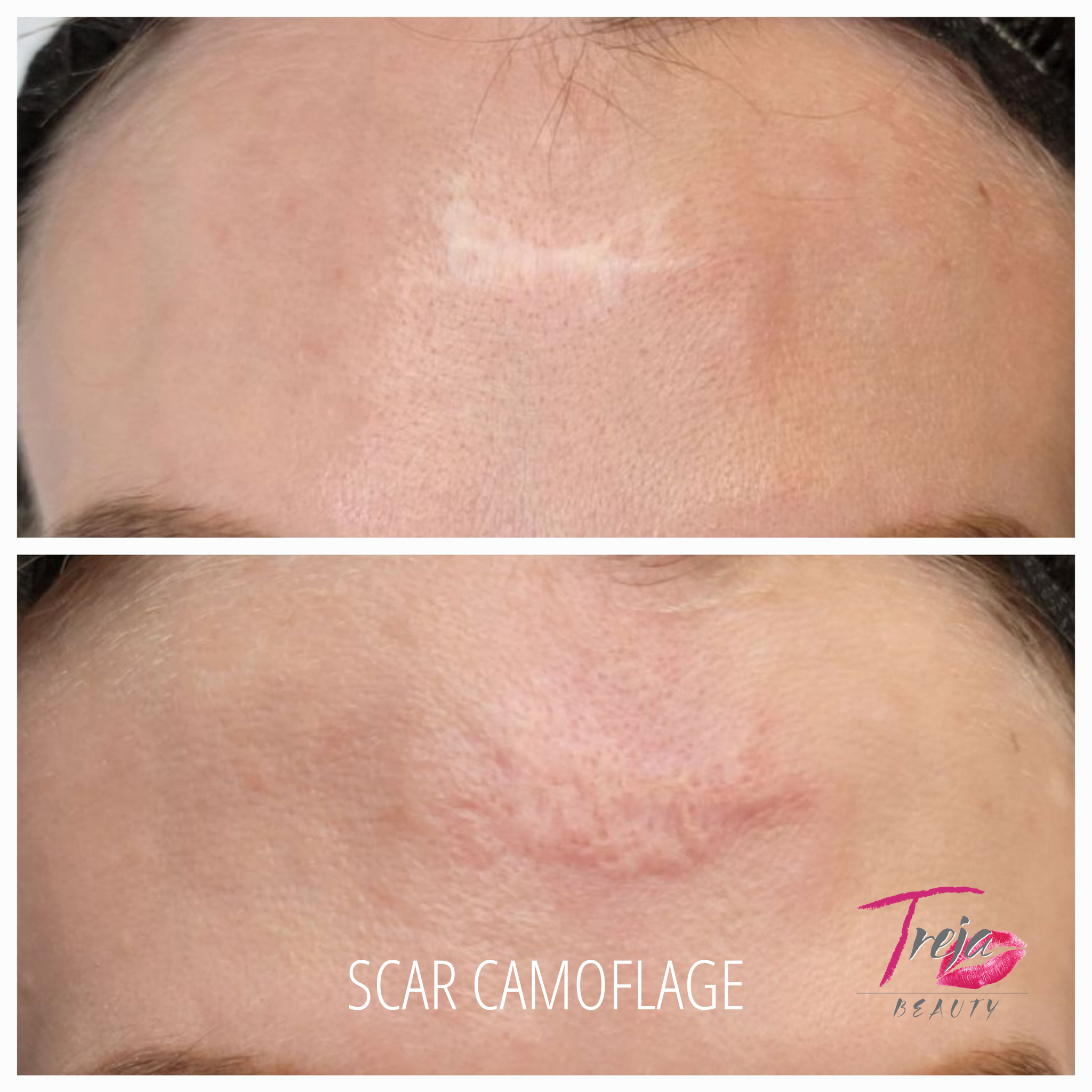Let’s face it–life is rough and scars happen. Maybe you had a major surgery that left visible scarring behind. Perhaps you had a wild gardening accident, or–true story–your cat got startled while you were holding him and he left a big gash on your chest.
Point being, no matter how you live your life, you’re likely to have scars.
And, while some folks don’t mind a scar or two (the cat scar is kind of a funny memory now) many of us have scarring we’d rather get rid of. That’s where microchanneling comes in.

WANNA KNOW HOW YOU GOT THOSE SCARS?
When our bodies sustain an injury, the body immediately goes into survival mode. In order to quickly close the wound, it starts piling up skin cells. But, because the body is in such a hurry, the skin cells tend to lump up in a disorderly fashion. Imagine the TSA line during a busy holiday weekend and that’s pretty much what your skin cells are doing when there’s a trauma. This piling up is what creates the puffy, uneven texture we often see with scars–because our bodies are built to keep us alive, not looking pretty. We wish it was both, but alas.

REMODELING THE SCAR TISSUE
As we shared in our previous post, microchanneling creates micro-injuries which cue the body’s natural healing process. When we microchannel the face, neck, and chest, our main focus is to boost collagen production. When we microchannel scars, the micro-injuries are just enough to cue your body to heal up again. This allows the body to lay down new skin cells in their proper reticulated fashion. This is more of an overlap that resembles a cross-hatching pattern, and the result is smooth rather than the piles of emergency skin your body originally created.
OTHER WAYS TO REDUCE AND RE-HEAL SCARS
We’re seeing some promising results with fibroplasma, but this is a new and emerging use for plasma. Keep an eye out for more information about plasma for scar therapy in a future blog, as our team is currently researching its use and efficacy. That said, we’re pleased with the results we’ve seen so far in reduction and healing of surgical scars using fibroplasma.
Another method we have to reduce the appearance of scars is medical tattooing, or scar camouflage. This is a great technique for people with scars that are relatively flat and smooth but still visibleThis method won’t make the scar 100% disappear, but can closely match your scar to your natural skin color, making it hardly noticeable.
This is best done when your skin is light (meaning not after you’ve had a long, sunny vacation.) It’s also important to note that camouflaged scars won’t tan with the rest of your skin, so sunscreen is critical aftercare. Actually, sun protection is critical no matter what your skin condition is, but we’ll save that for another blog.

Unfortunately, if your scars are hyper-pigmented (pink, red, generally darker than your skin) medical tattooing can’t lighten them. In cases like this, treatment may require more microchanneling sessions to get the desired result.


WRAPPING IT UP
No matter which treatment course is right for your scars, each method will require several treatment spaced out over 4-12 weeks depending on the method(s) you go with. For instance, if we’re tattooing to camouflage your scars, we’re going to want to slowly layer the color in so the area has a multidimensional and semi-transparent look that undamaged skin has. With other therapies, we just need space for healing time.
If you have any questions, our door is always open and we can do a free consultation to see which treatment is right for you.


